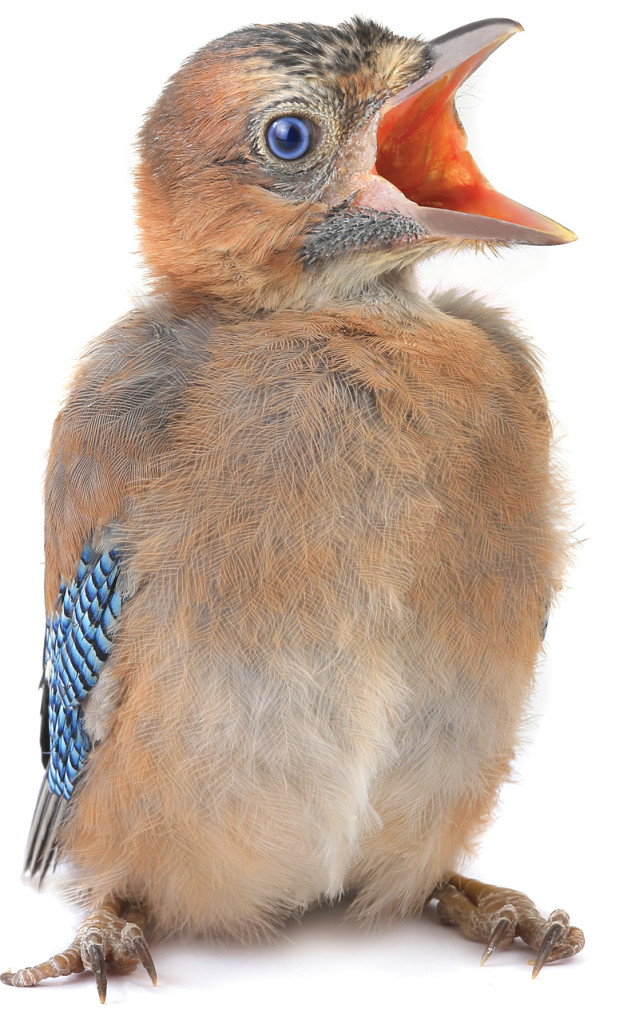Walking down a typical Berkeley street, you might overhear anything from student gossip to the political rants of local activists. High above all that human chatter, however, floats a different type of conversation: birdsong. Birds may live simple lives compared to humans, but they communicate with songs that rival our own language in terms of complexity. Recently, researchers at UC Berkeley have begun to investigate the environmental and genetic forces that shape the structure of birdsongs, providing a glimpse into the evolution of human language.
 Credit: bazilfoto
Credit: bazilfoto
The similarities between birdsong and human language are apparent from a very young age. Like a child learning to speak, a young bird must first hear the vocal sounds of adults and then imitate those sounds on its own. Initially, baby birds sing a faint, unstructured song, akin to babbling in human infants. By adulthood, this immature chirping progresses to a more consistent birdsong, just as babbling progresses to speaking. There are also genetic similarities in the brain that allow birds and humans to hear and produce their respective songs and languages. Because of these similarities, the science of birdsongs promises to teach us about human language itself.
Professors Terrence Deacon, an anthropologist at UC Berkeley, and Kazuo Okanoya, a neuroscientist at the RIKEN Brain Science Institute in Japan, study the evolution of birdsong by observing birds with vastly different upbringings. They use two variants of the same bird species: the domesticated Bengalese finch, and the white-backed munia, which lives in the wild. One might assume that a wild bird would produce a more diverse and complex form of birdsong, relying on nuanced communication to survive and procreate in a competitive environment. However, Deacon and Okanoya’s findings suggest just the opposite: though never bred for its singing abilities, the domesticated Bengalese finch has evolved a more flexible song than the white-backed munia.
To account for this, Deacon argues that the safety of domestication may allow birds to explore new ways of singing without dire consequences. When Bengalese finches were kept close together in cages during domestication, they were relieved of any natural, selective pressures that could be keeping their songs constant. Instead, sporadic mistakes in their songs could be retained, ultimately allowing for the Bengalese finch’s song to grow in complexity.
Okanoya had long considered sexual selection to be the driving force behind birdsong evolution, and decided to directly test Deacon’s hypothesis. “Although I was suspicious of Deacon’s idea, I conducted field work in Taiwan, where wild white-backed munias are available,” he said. Okanoya found that colonies of white-backed munias living with fewer neighboring species tended to develop more complex songs, implying that “song complexity interferes with species identity.” Since birds with fewer competing species did not need to distinguish themselves as much, they were free to increase the complexity of their songs, an observation that meshed well with Deacon’s “reduced pressure” hypothesis.
 Credit: YouraPechkin
Credit: YouraPechkin
The next step for Deacon and Okanoya is to understand the genetic factors underlying this difference in song complexity. By comparing the genes that are active in the relevant areas of the brain in each bird species, the two scientists hope to discern how particular genes control birdsong variability, and whether these genetic differences arose as a consequence of the Bengalese finch’s domestication. Once the genetics of these birdsongs are unraveled, scientists can begin to look for similar patterns of gene activation in the brains of primates and humans.
Deacon believes that the evolution of birdsong has intriguing implications for the evolution of human language. “The evolution of increased complexity in the case of the Bengalese finch song appears to have arisen in the context of global relaxation of selection,” Deacon explained. “The same could have happened in the evolution of human language.” This is a radical departure from traditional ideas about the evolution of language, which generally assume that language complexity could only have come about due to intense, rather than relaxed, sexual competition and selection.
The evolution of human language is one of the most significant and puzzling aspects in the natural history of our species. Birdsong has finally given scientists an appropriate, simple model for studying the evolution of communication, bringing us one step closer to solving the mystery of our most defining, unique trait. So take some time to appreciate a bird’s song, the next time one chooses to land on your windowsill—we may have more in common with our feathered friends than we ever imagined.
For more, check out this lecture by Terrence Deacon: Language and complexity: Evolution inside out.
This article is part of the Fall 2015 issue.



